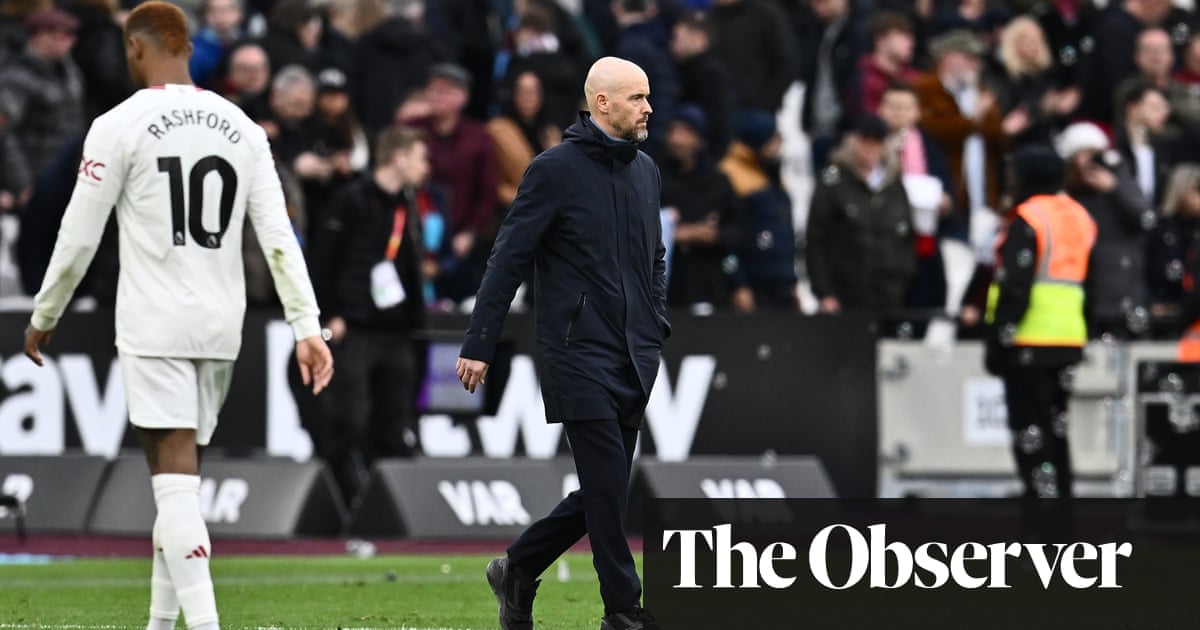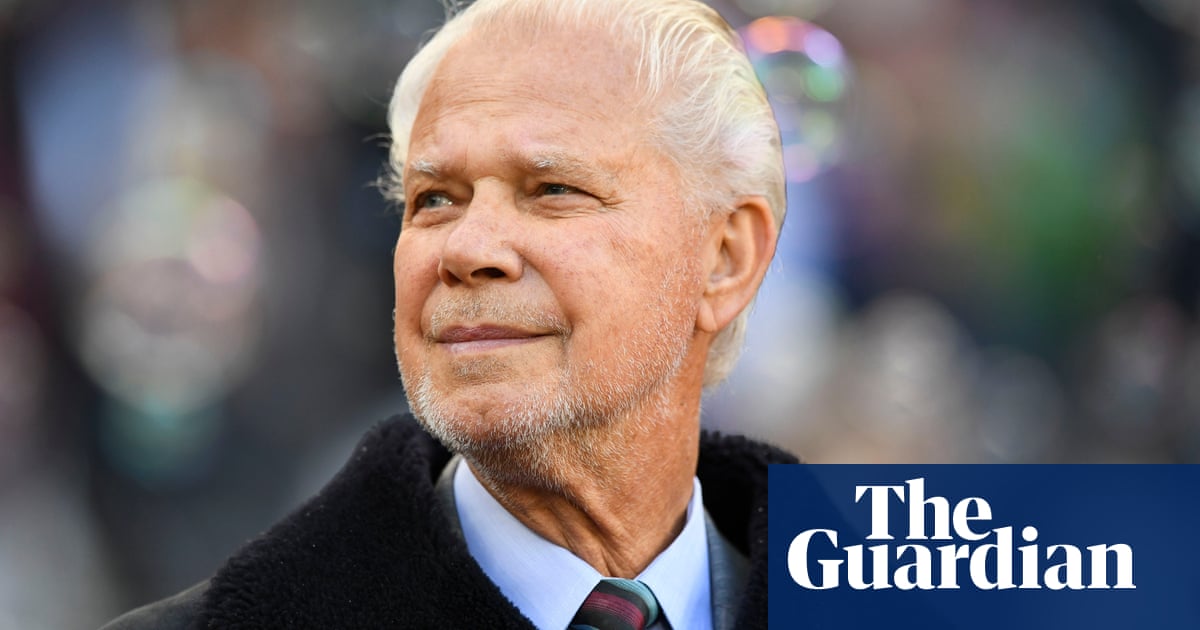
The fate of the little memorial garden on Green Street, next to where the Boleyn ground’s main entrance once stood, is just one of the problems facing West Ham United. Full of bedraggled scarves and wilting flowers and plaques dedicated to long-gone fans – should it be taken from its present location, where the roar of the crowd will never be heard again, and reinstalled in the club’s widely detested new home?
Another is the much loved statue 50 yards away, on the crossroads at the junction with Barking Road. It depicts Bobby Moore, the embodiment of the club’s self‑image, in his moment of greatest triumph, holding aloft the World Cup while borne on the shoulders of his club mate Geoff Hurst and Everton’s Ray Wilson, while a third Hammer, Martin Peters, looks on.
Across the road, posters in the windows of the Boleyn pub invite fans to join an online petition urging the mayor of Newham to stop the statue’s proposed move to the former Olympic Stadium in Stratford, four miles down road but a continent away in emotional distance. “The way I look at it,” the lady behind the bar says as she pulls a pint, “I mean, Bobby Moore and them never played at Stratford, did they?”
The football club has gone, leaving only echoes of the matchday crowds strolling along Green Street towards an institution that once gave life to this part of east London. The social centre of the West Ham United Supporters Club is shuttered and padlocked, a stained and crumbling hulk awaiting the outcome of a meeting at the pub later this month.
The Boleyn, Nathan’s Pie & Mash restaurant and the Newham Bookshop, celebrating its 40th anniversary this spring, are among the few visible survivals in a district whose demographics and culture have changed almost beyond recognition in the decades since Moore, Hurst and Peters returned in triumph to a tightly knit community.
On a wall at the back of the old supporters’ club centre, someone has spray-painted LONG LIVE THE BOLEYN in blue on a claret background. But the Boleyn is dead and gone, swiftly razed once the sale of the ground to developers for around £40m was completed. Whatever the football club’s destiny, it will not be played out in E13. The pre-match pie and mash delivered by Nathan’s to a new fans’ rendezvous on the edge of the Olympic Park is as close to the old authenticity as the Hammers’ more nostalgic fans can come in the club’s new age.
West Ham’s true legacy in this part of east London is the building site from which apartment blocks are rising, fronted by a landscaped sales suite where eager representatives give their spiel to prospective buyers of a range of 842 living units. Although attractive enough in the glossy brochure, these are not the kind of palaces in the sky currently rising in more prosperous parts of London. It’s hard to imagine members of the McMafia wanting to park their families or their funny money in this unpretentious location.
By every yardstick except that of profit for the club’s owners, the new development seems an unfair swap for what was once a football ground with a character built up through 112 years of joy and disappointment. With a final capacity of 35,000, Upton Park always seemed to be the right size for a club of West Ham’s proportions and aspirations: big enough to stage top-tier matches but not an embarrassment in harder times.
Football fans, however, are easily persuaded by dreams of glory, and West Ham’s faithful were no different when they listened to the promises of their owners, the former porn barons David Gold and David Sullivan. Had the team built on the promise of the last season at Upton Park, when Slaven Bilic guided them to seventh place in the Premier League, there would have been no scenes like those witnessed last Saturday.
Success on the pitch would have silenced internal reservations about the former Olympic Stadium’s inadequacies and probably external complaints about the £300m of public money spent on the rebuilding, too. But failure, unsurprisingly, has turned the cocktail of incompetence, expediency and greed created by the deal into something explosive.
Before trouble broke out at the weekend, forcing the owners and their families to retreat from a furious mob, the club had managed to stop a planned protest march from Upton Park to Stratford. In meetings attended by Karren Brady, the club’s vice-chairman, they negotiated with various supporters’ groups, including one that includes members of the old Inter City Firm, West Ham’s representatives in the hooligan wars of the 1970s and 80s.
By appearing to favour one fan organisation over others, making offers to reimburse travel costs and provide complimentary match tickets, Brady and her colleagues appear to be copying the modus operandi of Argentina’s barras bravas and Italy’s ultras, some of whom have historically used the threat of violence and disruption as a means to gain favoured status and a measure of power within their clubs. This is a dangerous game and one to which, amid the present volatile mood, it is hard to foresee a happy ending.
At least West Ham’s owners still make their way from their Essex and Surrey mansions to show their faces on matchday. But what they are watching is the sight of their policies turning the threat of relegation from something to be absorbed with a bit of grumbling and a few economies into a potential catastrophe for a club whose strong heart they have ripped out and left bleeding in Green Street, amid the scarves and flowers. The Guardian Sport












